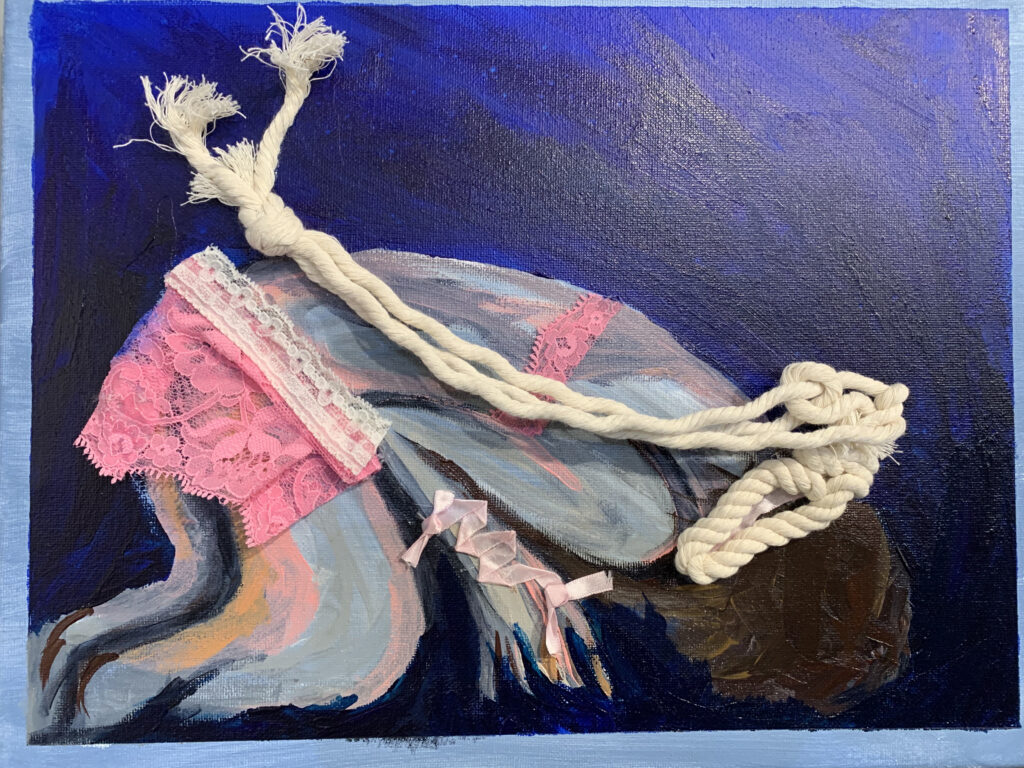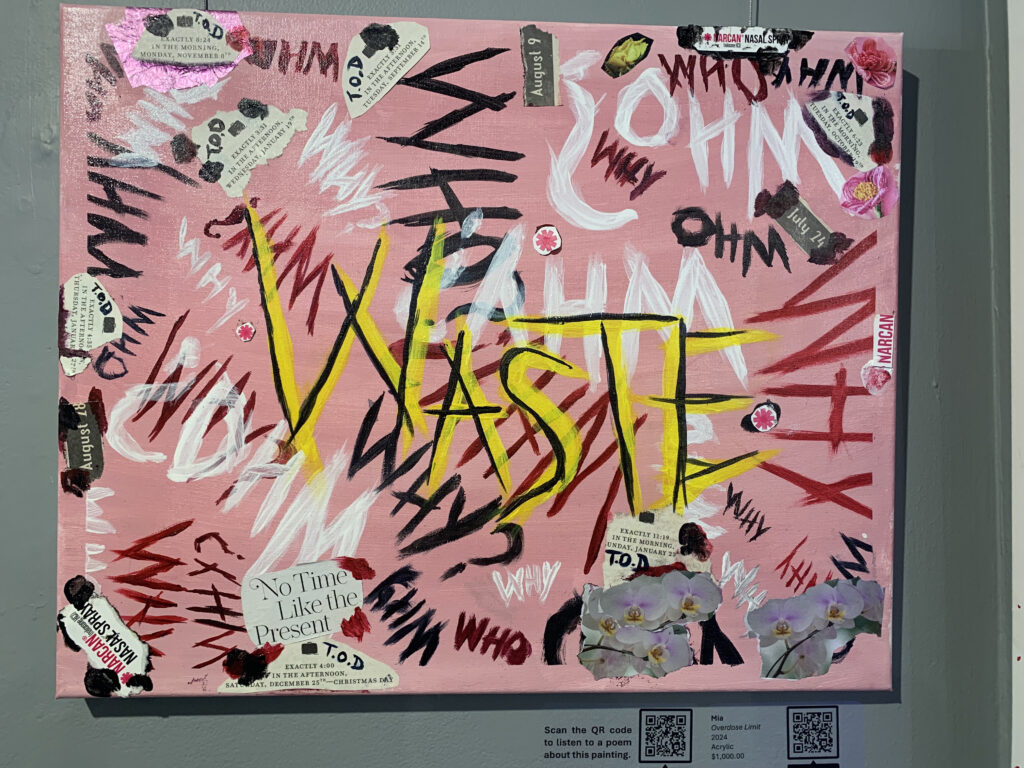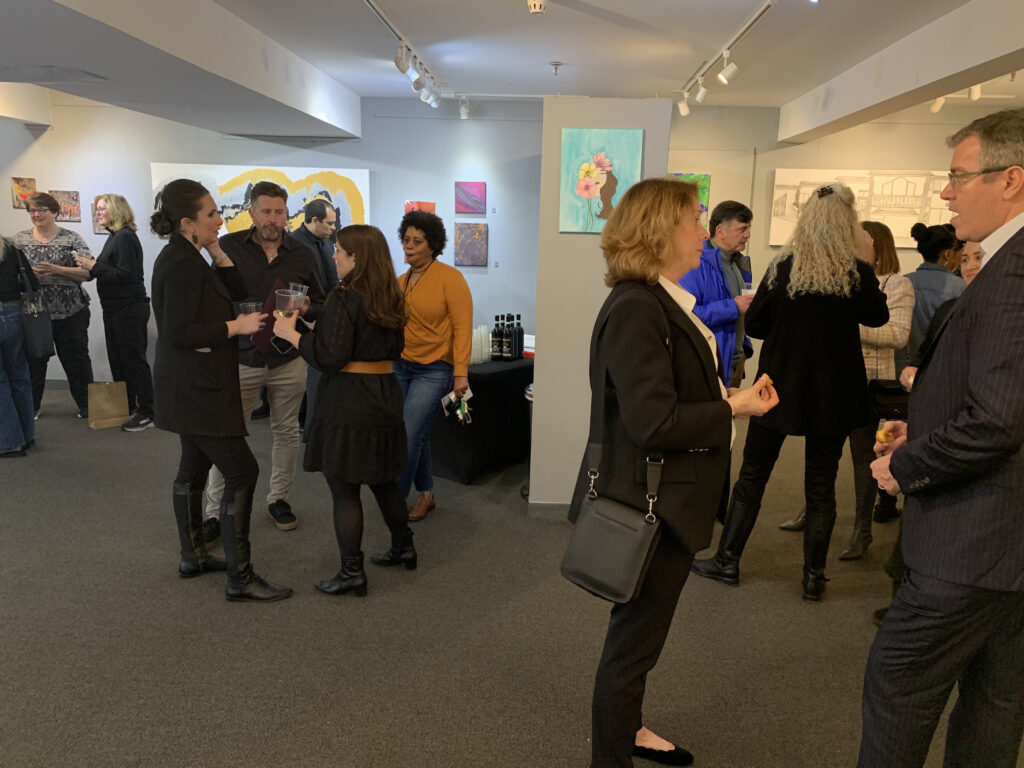The Rye Arts Center and the Partnership to End Human Trafficking have teamed up to present, “Art of Survival,” an exhibit both heart-breaking and hopeful.
The two-week show, which ends on March 22, features 48 artworks by eight artists who are all survivors of human trafficking. Some pieces feature bright colors and flowers, others portray drug-addiction and loss. Still others are even darker, using autobiographical images of control and abuse.
The “Art of Survival” is less about the art than what the process of making art can do for the artist.
“It’s my way to tell the darker, scarier parts of my story without having to actually tell them,” said an artist named Mia, who like other artists in the show, only used her first name to remain anonymous for her safety. Some used pseudonyms.
Mia is a graphic designer at the partnership, which provides free housing to survivors of human trafficking for up to two years. And she’s a former resident there.
“It’s also a way to do it with more creativity and more depth than I can do with my voice,” she said.
In Mia’s multimedia piece, “Remember. Bow. Surrender,” (2024), a woman kneels with her head to the ground. A rope glued to the canvas looks like it is tied around the woman’s neck. Pieces of pink lace are glued to where the woman’s underwear would be. With skin painted in shades of indigo, periwinkle, cerulean, and stone, “Remember. Bow. Surrender” is reminiscent of Picasso’s “Blue Period,” though more agonizing.
“You can’t just go away and pray this type of pain away” (2024) is a large canvas covered in red paint, as if it were blood smeared across a wall. More than a dozen names — Linda B., Matthew S., Janella C — glow and then disappear with the manipulation of a UV light. Those are people Mia knew before they died from drug over- doses. Mia too was an addict. By putting the names in a visual context, Mia gives herself permission to “let that part of my life go, because I am not headed down that path,” she said.



In 2023, the Department of Homeland Security reported 2,610 arrests related to human trafficking across the U.S., leading to 519 convictions. The problem is everywhere, including in our own backyard. The partnership was founded in 2016 to address human trafficking in Bridgeport, Connecticut. Between 2016 and 2021, Connecticut recorded 456 arrests for human trafficking-related crimes, including commercial sex abuse of a minor.
In 2019, the partnership opened a drop-in center at a church in Bridgeport, where victims could get food, essential items, and support. The non-profit then opened its first home in 2021, and is the only organization of its kind in Connecticut. Residents receive care that includes gym memberships, substance abuse treatment, and art therapy.
Carla Rose, an art therapist with a private practice in Manhattan, has been helping people heal through art for years.
“It’s a great tool for self-awareness,” she said. “You get away from your critical mind.” Rose, who is not affiliated with the partnership, said pursuing artwork around trauma “is like giving yourself permission to express what’s really in your heart.”
The opening reception on March 6 included a spoken word segment. Partnership members shared harrowing and inspirational poems.
“Currently, most of my healing is done through my poetry and my spoken word,” said Iris, one of the poets. She also was a resident of the partnership and is working on self-publishing a book of poems. “It helps me process a lot of my trauma because sometimes things just come out — once they’re on the table, then I can deal with it.”

The poetry conveys the struggles, fortitude, and hope that can be seen in the paintings. Some of the pieces are abstract — studies of reflection and creation more than a desired result.
Poppy, in her “Giustizia” series (2024), and Iris, in “Uncomplicated,” (2024), both used a drip-paint method. Fiery shades of acrylic paint engulf the canvases, having harmoniously coalesced as it dried. There are no brushstrokes and little human intervention, highlighting the importance of the artmaking process itself.
Iris was attending art school before she entered into an abusive relationship and was trafficked. She left school and lost her passion for art, but now she is slowly regaining that passion through her work with the partnership.
The exhibit is “a celebration of the arts that brings us together and exemplifies the journey to healing, which at times can be a rocky one,” said Adam Levi, RAC’s executive director. “But with the arts at the center, it can turn into a joyful gathering.”
The art exhibit is the first of its kind for the partnership, but the group hopes it won’t be the last. The works are for sale with all proceeds going to support programs to end human trafficking.















